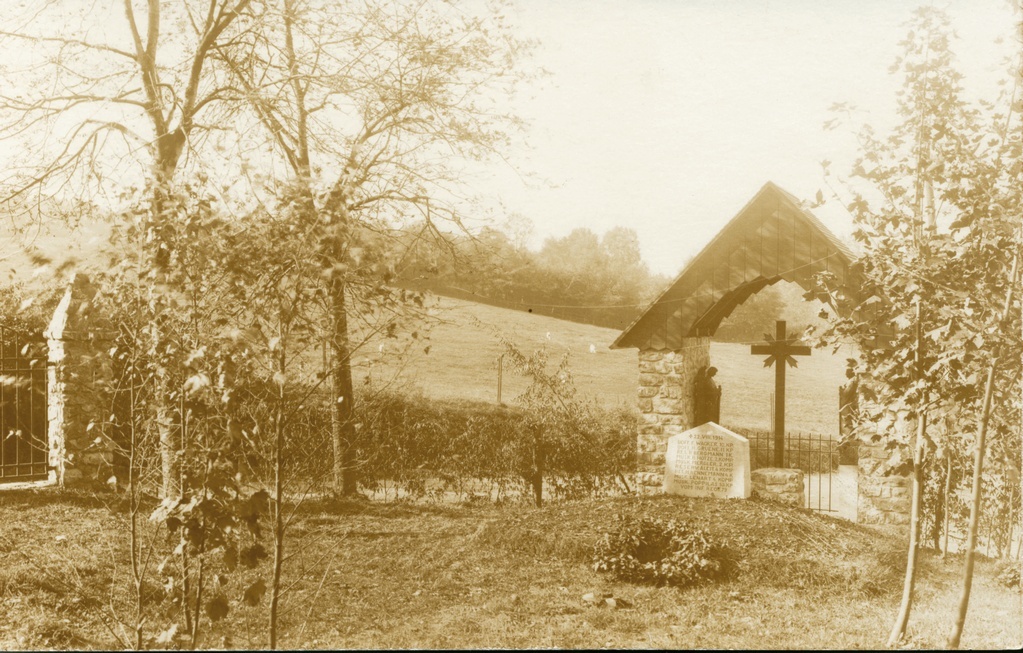The cemetery lies in a copse which descends towards the village of Aiseau. At the edge of the road, the entrance is completed by two pillars made from large stones and a wrought-iron gate. It is accessed by a stairway of five stone steps. The final stone leads to a simple stone monument erected in the shadow of a chapel, which shelters a cross in between two 'grieving parents', which bears the inscription dedicating it to:
"The battle for Aiseau
on 22nd August 1914, the heroes fallen
in memory, in recognition'
The sombre tombstones are distributed in several groups on a lawn beneath the silhouette of tall trees which cast a shadow over the area. The landscaping, however, allows the beds of mullein and St John's wort to bring a blooming of bright colours all summer. Separating the French cemetery, a plantation of barberry pines grows amongst the more mature trees, creating a border there.
Between 1954 and 1958, Belle-Motte German cemetery was included in the programme that re-grouped the German cemeteries situated in the Kingdom's territory. They went from 68 to 4. More than 9,000 identified and 25,000 unidentified bodies were thus transferred to Langemark and Vladso in the province of Western Flanders.
